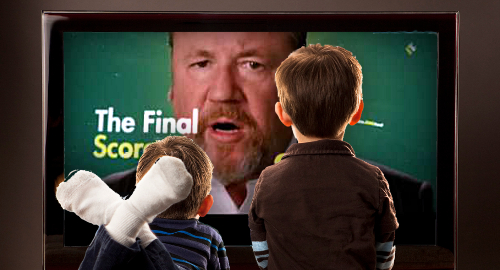 Gambling operators’ advertising practices are likely to come under renewed attack following the results of a new UK Gambling Commission survey of youth gambling.
Gambling operators’ advertising practices are likely to come under renewed attack following the results of a new UK Gambling Commission survey of youth gambling.
The survey (viewable in full here) involved a representative sample of 2,411 children aged 11-15 in England and Wales. Some 16% of kids reported spending money on some form of gambling in the past week, within the 15-17% range of the past three years, and well down from 2011’s high of 23%.
The most popular form of kid gambling was a tie between fruit machines in arcades and clubs, and private wagers between friends, each of which netted a 5% score. Playing card with friends and buying National Lottery scratchcards tied for second at 4%. The National Lottery’s main draw scored 3%, while bingo at bingo clubs scored 2%.
The following categories each reported 1% participation: other gambling machines, personally placing a bet at a betting shop or playing a shop’s gaming machines, gambling online and other National Lottery games (including online instant win games).
Combining all forms of online activity, 3% of teens claim to have gambled online, with boys (5%) outpacing girls (1%) by a wide margin. Amazingly, the percentage of kids who gambled online using their parents’ accounts with their parents’ permission was four times higher than those who did so without their parents’ permission in terms of National Lottery games, and twice as high for other online gambling sites.
Nine percent of kids copped to playing online free-play social gaming, with boys (11%) again outpacing girls (7%). Poker was the boys’ game of choice at 23%, while bingo scored highest with girls at 25%. Mobile apps remain the dominant form to pursue social gaming play, while Facebook’s score fell 11 points from last year’s survey to 25%.
The survey found that most kids continue to get the message that gambling carries risks, with 58% agreeing with the statement that ‘gambling is dangerous’ while just 9% disagreed.
As for why kids choose to gamble, the most popular reasons were making money, seeking fun, excitement and/or an escape from boredom. Boys scored higher than girls in most of these categories, except ‘because my family were doing it,’ which was cited far more by girls (16%) than boys (11%).
‘THE TELLY MADE ME DO IT’
The kids’ impressions of gambling marketing will likely factor into the UK government’s current review of the industry’s TV advertising practices. Three-quarters of kids reported seeing gambling adverts on TV, while 63% saw the ads via social media and 57% viewed ads on other websites.
Anti-gambling campaigners will have a field day with the fact that 1% of kids claimed viewing gambling ads “prompted me to start gambling for the first time,” while another 1% claimed the ads “prompted me to increase the amount that I gamble.”
Yet the number of kids classified as problem gamblers remains miniscule (0.4%) and actually represents a decline from 2015’s 0.6%. The problem gambling stat also mirrors that of the adult population’s 0.5% rate.
BETTING SHOPS POST BETTER ‘MYSTERY GUEST’ TEST SCORES
Meanwhile, the UK’s five largest retail betting operators – William Hill, Coral, Ladbrokes, Betfred and Paddy Power – managed to improve their scores on the government’s underage purchasing test. The test involves sending several ‘mystery visitors’ aged 18 or 19 who attempt to gamble on a betting shop’s gaming machines or placing a sports bet over the counter to see if they’re challenged by shop staff to produce proof of age.
The 2016 survey found 78% of mystery guests were challenged by shop staff before they could gamble, up from 73% in 2015. Similarly, the number of guests who were challenged at any point during their visit improved from 85% to 89%, while the number of guests who prompted no challenge fell from 15% to 11%.